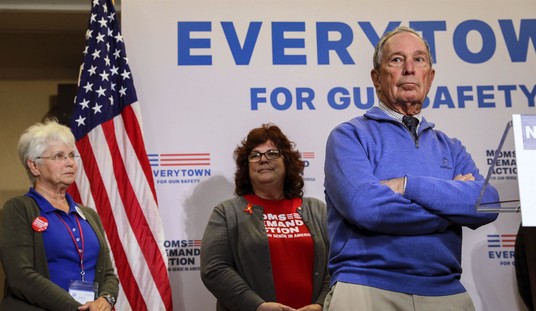Gun Owners of America have teamed up with Defense Distributed and JSD Supply in penning a stinging open letter to Joe Biden and other White House officials who are considering an executive order compelling the ATF to redefine the federal definition of a “firearm” to include unfinished frames and receivers.
That rumored executive order is a top priority for gun control groups, but as GOA, Defense Distributed and JSD Supply are reminding Biden, redefining what constitutes a firearm under federal law is the job of Congress, not the executive branch.
Gun Owners of America, Defense Distributed, and JSD Supply are collectively writing to you to advocate on behalf of the millions of non-commercial manufacturers of homemade firearms— law-abiding Americans who make up our grassroots supporters and customers. These people are engaging in lawful activities that are as old as our republic itself.
We find it necessary to remind you and your administration that, at present, there is no federal prohibition on manufacturing non-commercial firearms for personal use. “Congress did not draft the GCA [Gun Control Act of 1968] to develop a categorical anti-gun approach to firearm regulation.” Even the Bureau of Alcohol, Tobacco, Firearms, and Explosives (ATF) believes that the legal dispute over “ghost guns” is, “at its core, a policy dispute.”
ATF maintained on January 11th of 2021 that “in any event, because receiver blanks do not fall within the plain meaning of the GCA’s definition of “firearm,” the consequences of that definition are for Congress to address.”
Any attempt to force the federal government to further regulate non-firearms commonly referred to as “ghost guns” would therefore be both arbitrary and capricious.
Forcing ATF to adopt a new approach to the classification of non-firearms would greatly expand ATF authority beyond the GCA; it would also violate rights protected by the Second Amendment by imposing restrictions on otherwise lawful activity excluded from the GCA.
In other words, get ready to be sued if you try to move forward with the rumored executive order.
The letter goes on to describe in great detail how the ATF views unfinished frames and receivers given the explicit language of the Gun Control Act of 1968.
The website for the ATF provides answers to many commonly asked questions which your administration officials seem to be asking. One such question the ATF answers is: “Does an individual need a license to make a firearm for personal use?”
ATF correctly provides the following response: “No, a license is not required to make a firearm solely for personal use. However, a license is required to manufacture firearms for sale or distribution.”
We represent gun owners who are not engaged in the business of manufacturing firearms for sale but who instead legally manufacture firearms for non-commercial personal use.
Further, the term “80% receiver” is a term of art used to describe an “unfinished receiver” or “receiver blank” that is not yet to a sufficient stage of completeness to be considered a firearm. The term is not found in any statute or regulation because such items are not firearms and are not regulated by federal law in any way.
The ATF website also sets out the question: “What is an ‘80%’ or ‘unfinished’ receiver?” The response provided is: ‘“80% receiver,’ ‘80% finished,’ ‘80% complete’ and ‘unfinished receiver’ are all terms referring to an item that some may believe has not yet reached a stage of manufacture that meets the definition of ‘firearm frame’ or ‘receiver’ according to the Gun Control Act (GCA). These are not statutory terms and ATF does not use or endorse them.”
The ATF has long taken the position that “[r]eceiver blanks that do not meet the definition of a ‘firearm’ are not subject to regulation under the Gun Control Act.”In fact, “ATF has thoroughly considered the efforts, steps, and tools needed to convert receiver blanks into firearms, along with the time necessary to do so when relevant or appropriate, going back to as early as 1983.”
A “firearm” is defined as “any weapon (including a starter gun) which will or is designed to or may readily be converted to expel a projectile by the action of an explosive.” This definition includes “the frame or receiver of any such weapon.”
A “handgun” is defined as “(A) a firearm which has a short stock and is designed to be held and fired by the use of a single hand; and (B) any combination of parts from which a firearm described in subparagraph (A) can be assembled.”
On November 30, 2020, the ATF filed a Motion to Dismiss a complaint brought by the State of California and an anti-Second Amendment group, seeking to force the ATF classify 80% receivers as firearms.
The ATF’s position in that case, as of November 30, 2020, is as follows: “ATF defines a ‘receiver’ as ‘that part of a firearm which provides housing for the hammer, bolt or breechblock, and firing mechanism, and which is usually threaded at its forward portion to receive the barrel.’
A receiver blank does not yet ‘provide[] housing for the hammer, bolt, or breechblock, and firing mechanism,’ and is therefore not a ‘receiver’ within this definition.” And further, “[a] receiver blank in which no ‘machining of any kind’ has been ‘performed in the area of the trigger/hammer (fire-control) recess (or cavity)’ has no space yet that can ‘hous[e] [the] firing mechanism,’ 27 C.F.R. § 478.11, and therefore ATF’s interpretation of ‘receiver’ to exclude receiver blanks is not inconsistent with the regulation.”
Neither 3D printed gun files nor unfinished receiver blanks constitute “firearms” or “handguns” because they are not “firearms.” Additionally, an unfinished receiver sold as a kit with other unregulated gun parts is not a “combination of parts from which a firearm […] can be assembled” because the unfinished frame must first be manufactured before it can be assembled. And no amount of additional unregulated parts sold alongside an unregulated unfinished receiver blank can magically transform a non-firearm into a “firearm” or a “handgun.”
There’s a lot of valuable information in the letter to the Biden White House, but it’s an open question as to whether or not anyone in the administration will actually bother to read it. Gun control groups are getting increasingly anxious for Biden to do something, and executive actions have a greater chance of success than trying to ram a gun control bill through Congress at the moment. Biden can at least sign an executive order, though as GOA and other 2A groups like the Second Amendment Foundation have indicated, the president should expect that any constitutional overreach will be swiftly be met with litigation defending the rights of gun owners.
Honestly, Biden would be better off proclaiming that, after studying the issue, he’s come to the conclusion that his violence prevention efforts must be focused exclusively on programs and policies that won’t lead to overpolicing and incarceration instead of establishing new, non-violent possessory firearm offenses that will be disproportionately enforced in Democrat-controlled cities.
I don’t think Biden has the guts or the brains to do it, however. He’s too entrenched in the old-school gun control philosophy of banning our way to safety rather than getting smart on crime with focused deterrence efforts aimed at the most likely and prolific offenders. And frankly, I think Biden is ideologically committed to the idea of restricting legal gun ownership as much as possible, rather than looking at constitutionally sound and effective ways to improve public safety across the country. At the end of the day, his heart is with the gun prohibitionists, rather than the violence preventionists.
Editor’s Note: Want to support Bearing Arms so we can tell the truth about Joe Biden and the Left’s radical gun control agenda? Join Bearing Arms VIP. Use the promo code GUNRIGHTS to get 25% off your membership.









Join the conversation as a VIP Member